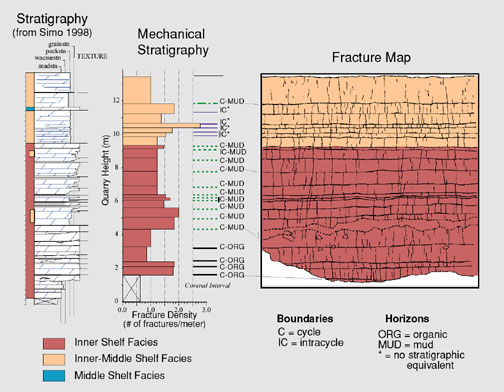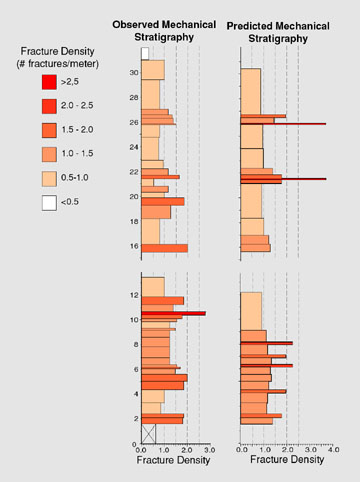|
|
Fracture termination at top of shallowing-upward cycle boundary. Below the cycle boundary are sheet cracks indicative of supratidal setting. Above the cycle boundary is an inraclastic conglomerate of deeper environment. Staining along the fractures indicates fluid flow through this fracture network that may have been enhanced by blasting of the outcrop. |

Fracture maps can be used to infer the mechanical stratigraphy - that is characteristics of the lithostratigraphy that control fracturing. These are the layer thickness, stiffness and nature of contact between the layers. We them compare the sedimentary stratigraphy to the mechanical stratigrpahy in order to assess which stratigraphic horizons are most effective at terminating fractures. These quantitative information are used to formulate empirical relationships that can guide prediction of fracture pattern.

This figure shows one stochastic realization of predicted fracture density compared with the observed fracture density. The prediction is based on the empirical relationships between litho- and mechanical stratigrapy developed from field observations.